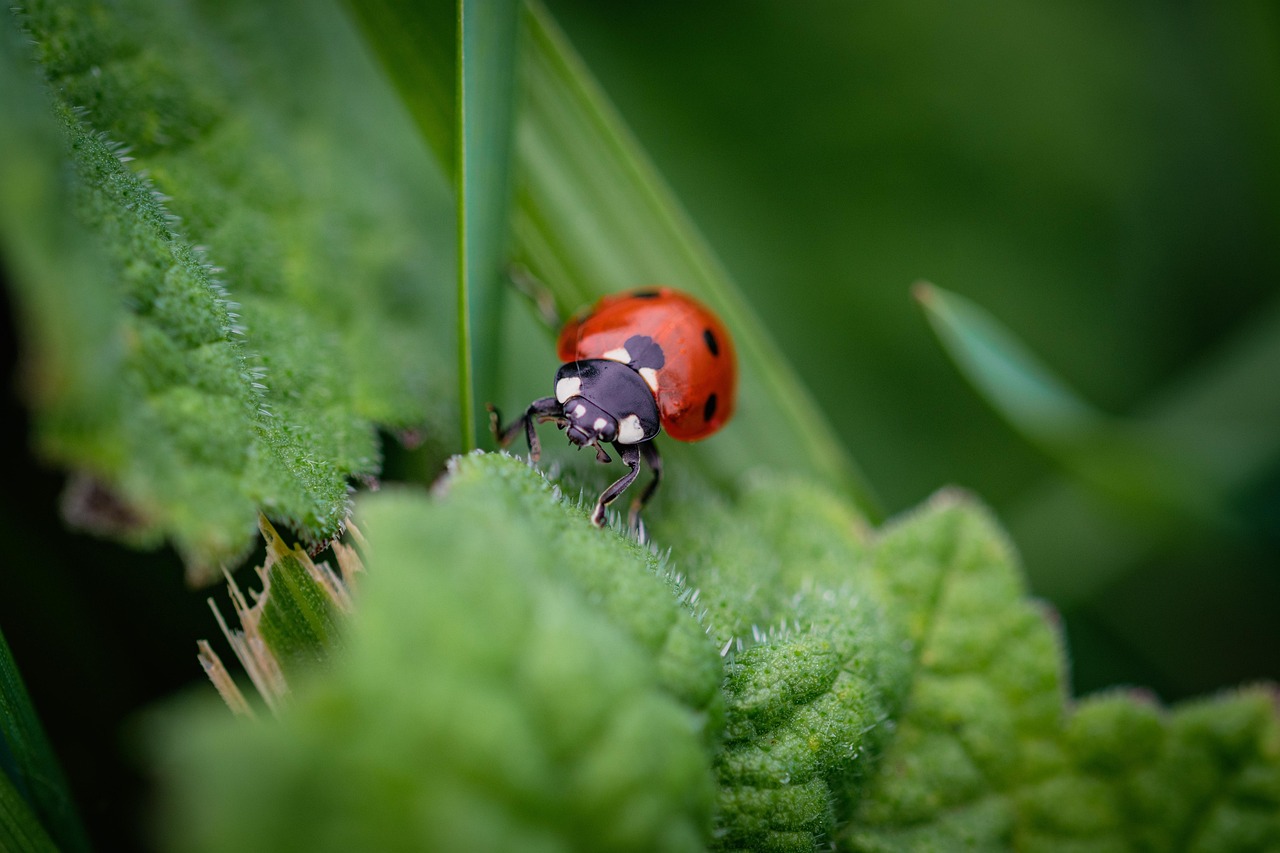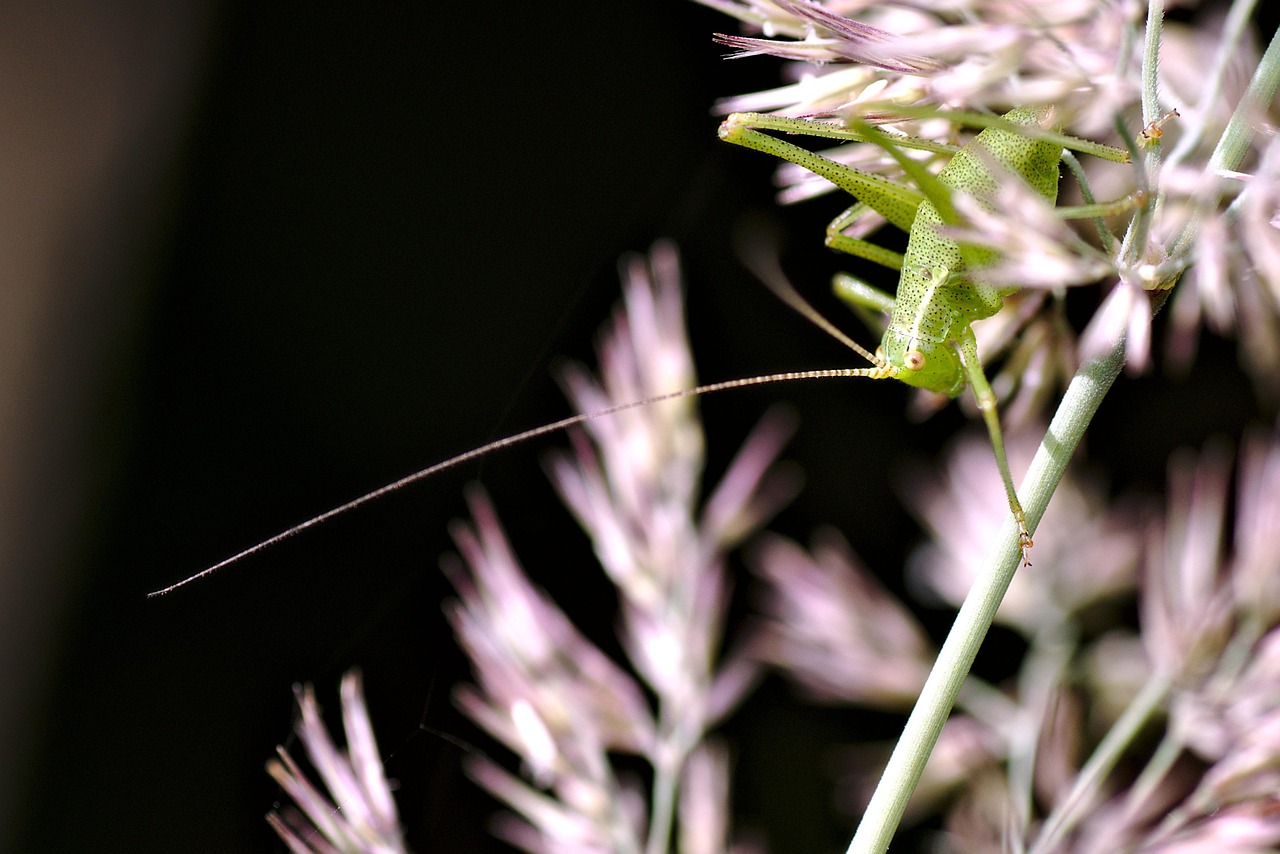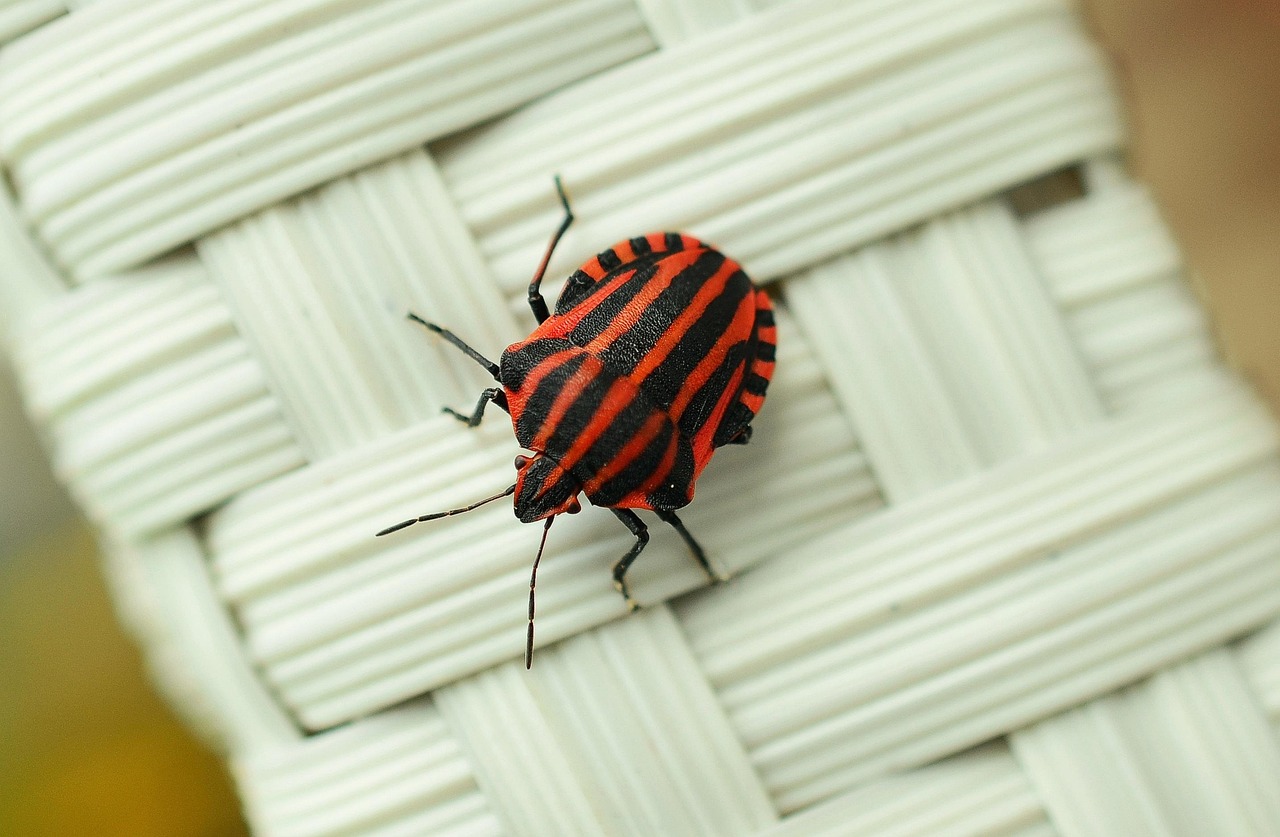Have you ever noticed tiny black bugs resembling poppy seeds in your home or garden? You are not alone. Many people encounter these minuscule pests, often leaving them puzzled and concerned about their presence. Understanding what these insects are and how they can affect your environment is crucial for effective management. This article will delve into the characteristics of these tiny black bugs, their potential impact, and ways to identify them.
These tiny black bugs can often be alarming, especially when they appear in large numbers. At first glance, their resemblance to poppy seeds can make them hard to distinguish from harmless debris. However, some of these bugs can cause damage to plants or even create issues within your home. Identifying the specific type of bug is the first step toward determining how to deal with them effectively.

In many cases, the bugs that resemble poppy seeds could be one of several species. Some of the most common culprits include:
- Fungus Gnats: Small, dark, and often found in moist soil.
- Black Aphids: Tiny sap-sucking insects that can harm plants.
- Thrips: Slender insects that can cause damage to flowers and leaves.
- Seed Bugs: Associated with seeds and can be found in gardens.
Each of these pests has unique behaviors and preferred habitats. Understanding their characteristics helps in managing their populations effectively. Below is a table summarizing key features of each type of bug:
| Bug Type | Appearance | Habitat | Potential Issues |
|---|---|---|---|
| Fungus Gnats | Small, black flies | Moist soil, especially in potted plants | Larvae can damage roots |
| Black Aphids | Tiny, pear-shaped | On plant stems and leaves | Sap-sucking, can stunt growth |
| Thrips | Long and slender | Flowers and leaves of various plants | Disease transmission, feeding damage |
| Seed Bugs | Small, flat, black or brown | Near seeds and grains | Can infest stored grains |
Identifying these bugs can be a challenge due to their small size and similarities with benign materials. A closer inspection is often necessary. For instance, fungus gnats tend to fly around the soil of houseplants, whereas black aphids cluster on new growth. Recognizing their behavior can aid in pinpointing their specific type.
Besides identification, understanding the life cycle of these pests is vital. Most of these bugs reproduce quickly, leading to a rapid increase in their population if not managed promptly. For example, fungus gnats thrive in damp conditions, laying eggs in moist soil where larvae can feed on plant roots.
This article will continue to explore effective methods for controlling these pests, including preventive measures and treatment options. Whether you are a gardener or simply seeking to keep your home pest-free, knowing how to address these tiny black bugs will empower you to take action against them.
Understanding Their Habitat
The habitat of these tiny black bugs plays a significant role in their presence and proliferation. Many prefer environments that offer moisture or access to plants. For instance, fungus gnats are often found in overwatered houseplants, while black aphids are drawn to healthy, vigorous plants where they can feed on sap.
In the upcoming sections, we will explore the behaviors and control methods for each type of bug mentioned above. This comprehensive approach will help you identify not only what they are but also how to manage them effectively in your living space or garden.
Identifying the Tiny Black Bugs
Proper identification of tiny black bugs that resemble poppy seeds is crucial for effective treatment. Different species require different approaches for management. Here are some key characteristics and behaviors to help you identify these pests accurately.
Fungus Gnats
Fungus gnats are among the most common tiny black bugs found indoors. They are small, about 1/8 inch long, with long legs and antennae. These insects are typically found flying around houseplants, especially those that are overwatered.
- Appearance: Dark body with long wings.
- Behavior: Often hover around the soil surface.
- Larvae: Small, white, and feed on roots and organic matter.
Black Aphids
Black aphids are small, soft-bodied insects that can be found on the stems and leaves of plants. They often cluster in large numbers, making them easier to spot.
- Appearance: Pear-shaped with long antennae, typically black or dark green.
- Behavior: Form large colonies on new growth.
- Damage: Can cause yellowing leaves and stunted growth.
Thrips
Thrips are slender, tiny insects that can also be mistaken for poppy seeds. They are usually found on flowers and leaves, where they feed on plant sap.
- Appearance: Narrow bodies, often with fringed wings.
- Behavior: Move quickly and can cause significant damage to flowers.
- Damage: Leaves may appear silvered or stippled due to feeding.
Seed Bugs
Seed bugs are small, flat insects often found near seeds, grains, or in gardens. They can be a nuisance if they infest stored seeds or grains.
- Appearance: Dark brown or black with a flattened body.
- Behavior: Often found in clusters around seeds.
- Damage: Can reduce seed viability if not managed properly.
The Life Cycle of Tiny Black Bugs

Understanding the life cycle of these tiny black bugs can provide insight into their management. Most species go through four stages: egg, larva, pupa, and adult. Here is a brief overview of each stage for some common pests:
- Egg: Tiny black bugs lay eggs in suitable environments, such as moist soil or plant tissue.
- Larva: The larval stage varies by species but often involves feeding on plant material or organic matter.
- Pupa: This stage may occur in the soil or on plants, depending on the insect type.
- Adult: Adults emerge from the pupal stage ready to reproduce, continuing the cycle.
The duration of each life cycle stage can vary widely among species and environmental conditions. For instance, under optimal conditions, some fungus gnats can complete their life cycle in as little as three weeks. Understanding this cycle helps in determining the best times for intervention.
Signs of Infestation

Recognizing the signs of infestation is essential for early intervention. Different bugs exhibit various symptoms on plants or within your home. Here are some common indicators:

- Visible Bugs: Seeing live insects is the most direct sign of an infestation.
- Yellowing Leaves: Plants affected by pests like aphids may show yellowing or curling leaves.
- Sooty Mold: This black mold can develop as a result of honeydew excretion from aphids.
- Pest Droppings: Small dark specks may indicate pest activity.
If you observe any of these signs, it is crucial to take action promptly. Early detection can prevent more significant damage and reduce the effort required for control measures later on.
Effective Control Methods for Tiny Black Bugs
Once you have identified the tiny black bugs and recognized the signs of infestation, the next step is implementing effective control methods. The approach may differ depending on the type of bug, but several strategies can be employed to manage their populations.
Prevention Strategies
Preventing an infestation is always the best course of action. Here are some effective prevention strategies:
- Maintain Proper Watering: Overwatering can create the moist conditions that fungus gnats thrive in. Ensure that plants are watered appropriately and allow the topsoil to dry out between waterings.
- Inspect New Plants: Always check new plants before introducing them to your home or garden. Look for any signs of pests or damage.
- Use Clean Soil: When repotting plants, use sterile soil to eliminate potential pests that could be present in contaminated soil.
- Encourage Beneficial Insects: Beneficial insects like ladybugs can help control pest populations naturally. Consider attracting them to your garden.
Cultural Control Methods
Cultural control methods involve changing practices to reduce pest populations. Here are some effective cultural control methods:
- Crop Rotation: Changing the location of your plants each season can disrupt the life cycles of pests and reduce their numbers.
- Companion Planting: Planting certain species together can deter pests. For example, marigolds can repel aphids when planted near susceptible crops.
- Regular Monitoring: Keep an eye on your plants for any signs of pests and act quickly if you notice any issues.
Physical Control Methods
Physical control methods involve manual techniques to eliminate pests. Here are some options:
- Handpicking: For larger insects, such as black aphids, you can remove them by hand. This is effective for small infestations.
- Sticky Traps: Yellow sticky traps can attract and capture flying insects like fungus gnats and thrips.
- Vacuuming: Use a vacuum cleaner to remove visible pests from plants or surrounding areas. Ensure to dispose of the bag immediately afterward.
Chemical Control Methods
If other methods do not yield results, chemical controls may be necessary. It is essential to use these products responsibly. Here are some chemical options:
- Pesticides: Use insecticidal soap or neem oil, which are less toxic options that can effectively target soft-bodied insects like aphids and gnats.
- Systemic Insecticides: These can be applied to the soil and absorbed by the plant, providing longer-lasting protection against sap-sucking insects.
- Follow Instructions: Always read and follow label instructions carefully to ensure safe and effective use of any pesticide.
Natural Remedies for Pest Management
Many homeowners prefer natural remedies to chemical treatments for pest management. Here are some effective natural solutions:
- Diluted Dish Soap: A mixture of water and mild dish soap can be sprayed on plants to suffocate pests like aphids and thrips.
- Cayenne Pepper Spray: A homemade spray using cayenne pepper and water can deter various pests due to its spicy nature.
- Essential Oils: Oils such as peppermint or rosemary can act as natural repellents when mixed with water and sprayed on affected plants.
Implementing a combination of these methods can significantly improve your chances of controlling tiny black bugs effectively. By remaining vigilant and proactive, you can protect your plants and maintain a healthy environment in your home or garden.
Monitoring and Maintenance
To ensure that your pest management strategies are effective, ongoing monitoring and maintenance are essential. Regularly inspecting your plants and surroundings will help you catch any new infestations early, making it easier to address them before they escalate.
Here are some tips for effective monitoring:
- Regular Inspections: Make it a habit to check your plants at least once a week. Look for signs of pests, such as discoloration, wilting, or any visible bugs.
- Keep a Pest Journal: Document any pest sightings or damage to track patterns and determine the best times for treatment.
- Utilize Technology: Consider using apps or digital tools that can help identify pests and provide treatment suggestions based on your observations.
Additionally, maintaining a clean environment is crucial. Regularly clean up fallen leaves, debris, and dead plant material, as these can harbor pests or provide breeding grounds. If you have houseplants, ensure that the pots are free from any accumulated water that could attract gnats.
When to Seek Professional Help
While many infestations can be managed with home remedies and cultural practices, there are times when professional assistance is necessary. If you find that your pest problem is becoming overwhelming or if the infestation is spreading despite your best efforts, it may be time to consult a pest management professional.
- Severe Infestations: If you notice a large number of pests affecting multiple plants or areas in your home, professional help may be required.
- Persistent Problems: If you have tried various control methods without success and the pests keep returning, an expert can provide targeted solutions.
- Health Concerns: If you suspect that pests may be affecting your health or the health of your family, seek professional advice immediately.
Final Thoughts
Tiny black bugs that resemble poppy seeds can pose challenges for gardeners and homeowners alike. Understanding what these pests are, their behaviors, and how to manage them effectively is crucial for maintaining a healthy environment. Whether you choose to implement preventive measures, natural remedies, or chemical treatments, being proactive is key.
Knowledge is your best ally in the battle against these pests. By identifying the bugs correctly, recognizing signs of infestation early, and employing effective control methods, you can protect your plants and home from damage. Remember that a combination of strategies often yields the best results, and regular monitoring will help you stay ahead of any potential problems.
Finally, whether you are a seasoned gardener or just starting out, patience and persistence are essential. With the right approach and resources at your disposal, you can successfully manage tiny black bugs and ensure the health and vitality of your plants.
